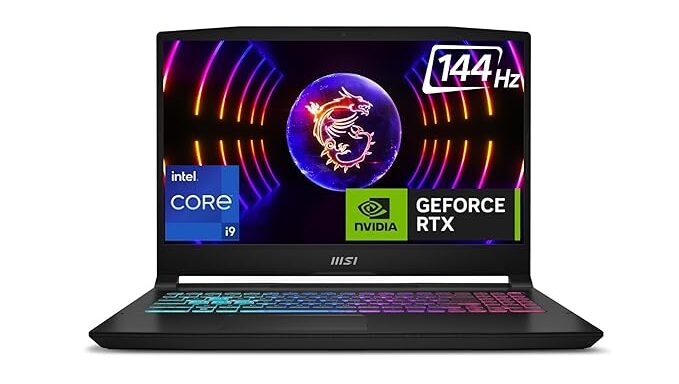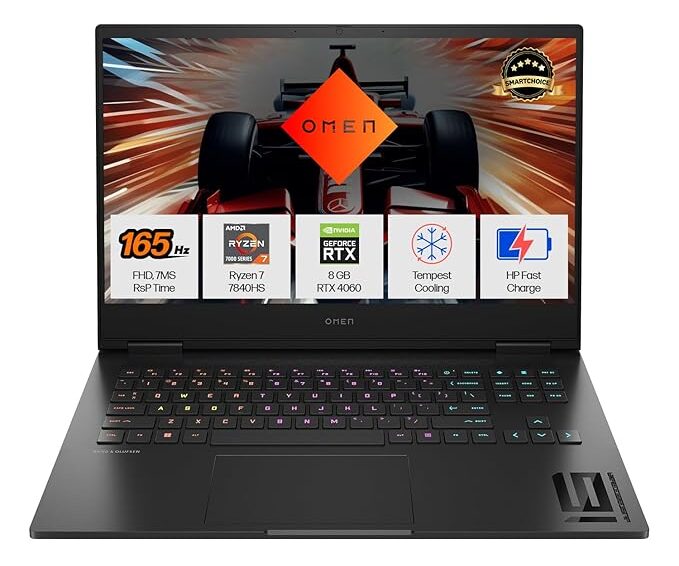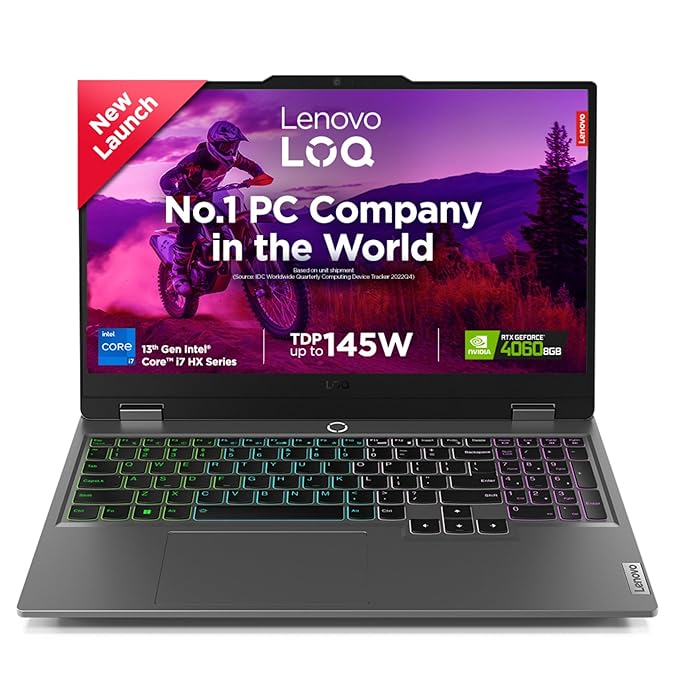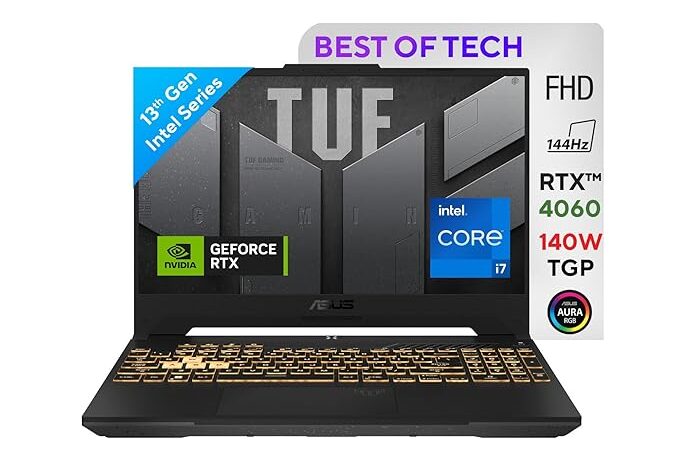Gaming Laptop: Essential Features for Optimal Performance
Discover key components for a smooth, immersive gaming experience with the right gaming laptop.
Unlock your gaming potential today!
A gaming laptop needs a careful balance of powerful components and features to deliver a smooth and immersive gaming experience. The following key features should be considered to select a good gaming laptop.
1. Graphics Processing Unit (GPU):
- It is dedicated to displaying images on the screen, the most crucial component for gaming.
- Look for dedicated GPUs from NVIDIA GeForce RTX series (like RTX 4060, RTX 4070, RTX 4080, RTX 4090) or AMD Radeon RX series (like RX 7000 series). Higher numbers can be used for better performance.
- Consider the VRAM (Video RAM) of the GPU. More VRAM (e.g., 8GB or more) is beneficial for playing games at higher resolutions and with more detailed textures.
- Features like ray tracing and DLSS (Deep Learning Super Sampling) on NVIDIA cards or similar technologies on AMD cards can significantly enhance visual quality and performance in supported games.
2. Central Processing Unit (CPU):
- The CPU performs game logic and instructions. For a satisfying gaming experience, consider at least an Intel Core i5 or AMD Ryzen 5 processor.
- Higher-end CPUs like Intel Core i7 or i9 or AMD Ryzen 7 or 9 can provide better performance, especially in CPU-intensive games and multitasking scenarios.
- Consider the generation of the processor, as newer generations typically offer better performance and efficiency (e.g., 14th Gen Intel Core or 8th Gen AMD Ryzen).
3. Random Access Memory (RAM):
- RAM is your laptop’s short-term memory, used for quickly accessing data.
- The minimum 16GB of RAM is essentially required for smooth multitasking and decent performance in most games today.
- 32GB of RAM is becoming increasingly recommended, especially for demanding AAA titles, open-world games, and running background applications like Discord or streaming software while gaming.
- Look for DDR4 or DDR5 RAM with higher speeds (measured in MHz) for better performance.
4. Display:
- Screen Size: 15-inch to 17-inch screen sizes should be considered for a gaming laptop.
- Resolution: Full HD (1920×1080) is a common standard, but QHD (2560×1440) offers sharper visuals. 4K (3840×2160) provides the highest detail but requires more powerful hardware.
- Refresh Rate: A high refresh rate (at least 120Hz) makes on-screen motion appear smoother, which is crucial for fast-paced gaming. Some laptops offer 144Hz, 165Hz, or even higher refresh rates.
- Response Time: A low response time (ideally less than 5ms) minimizes motion blur, providing a clearer image during fast action.
- Panel Type: In general, IPS (In-Plane Switching) panels provide superior viewing angles and color fidelity as compared to TN (Twisted Nematic) panels. Some high-end laptops may feature OLED (organic light-emitting diode) displays with exceptional contrast and color.
5. Storage:
- A fast Solid State Drive (SSD) is essential for quick boot times, application loading, and in-game loading. Choose at least a 512GB SSD.
- Some gaming laptops may have a combination of an SSD for fast access and a secondary Hard Disk Drive (HDD) for larger storage capacity for games and files. However, SSD-only configurations are becoming more common.
- Look for NVMe SSDs, which offer significantly faster read and write speeds compared to traditional SATA SSDs.
6. Cooling System:
- Gaming laptops get hotter in intensive gaming. An effective cooling system with multiple fans, heat pipes, and vents is crucial to prevent thermal throttling (performance reduction due to overheating) and ensure the longevity of the components. Some high-end laptops even incorporate liquid cooling solutions.
7. Keyboard and Touchpad:
- Keyboard: Look for a comfortable keyboard with good key travel, responsiveness, and anti-ghosting or N-key rollover features to ensure all key presses are registered, even when multiple keys are pressed simultaneously. Per-key RGB backlighting can also be a desirable aesthetic feature.
- Touchpad: While you’ll likely use a dedicated gaming mouse, a responsive and accurate touchpad is useful for general use.
8. Ports and Connectivity:
- Ensure the laptop has a sufficient number of USB ports (including USB Type-A and Type-C), an HDMI port for connecting to external displays, and potentially a DisplayPort.
- Wi-Fi 6 (or even the newer Wi-Fi 7) and Gigabit Ethernet support provide fast and stable network connections for online gaming.
- Prefer the latest Bluetooth version for connecting wireless peripherals like headsets and other controllers.
9. Battery Life:
- Gaming laptops are generally not known for long battery life, especially during intensive gaming sessions. However, some models offer better battery optimization for general use. At least 4 hours of battery backup is good enough for non-gaming tasks.
10. Build Quality and Design:
- A strong build quality enables the laptop for intense use. Materials like aluminum can offer better durability and a premium feel.
- The design can also be a factor, with some gaming laptops featuring aggressive aesthetics and RGB lighting.
By considering these key features, you can choose a gaming laptop that meets your specific gaming needs and budget. Remember to research specific models and read reviews to get a better understanding of their real-world performance and reliability.
MSI Katana 15, Intel Core i9-13900H/
16GB RAM/1TB NVMe SSD/
Nvidia GeForce RTX 4060, GDDR6 8GB

-31%
₹1,24,990/-
M.R.P. :
₹1,79,990/-
Buy for
- 13th Gen Intel Core i9 CPU
- Nvidia Geforce RTX 4060, GDDR6 8GB GPU
Avoid for
- 3 Cell Battery
- No MS-Office Included
MSI Katana 15 Specifications
| CPU | 13th Gen Intel Core i9-13900H Up To 5.4 GHz |
| RAM | 8GB x2 DDR5 5200MHz |
| Storage | 1TB NVMe PCIe Gen4x4 SSD |
| Screen | 40 CM (15.7") FHD (1920x1080), 144Hz, IPS-Level Panel |
| GPU | Nvidia Geforce RTX 4060, GDDR6 8GB Graphics |
| Software | Windows 11 Home |
| Ports | 1x Type-C (USB3.2 Gen1 / DisplayPort™) 2x Type-A USB3.2 Gen1 1x Type-A USB2.0 1x HDMI™ 2.1 (8K @ 60Hz / 4K @ 120Hz) 1x RJ45 |
| Networking | Wi-Fi 6 and Bluetooth 5.2 |
| Battery | 3-cell, 53.5 Wh Li-ion |
| Weight | 2.25 Kg |
HP Omen AMD Ryzen 7 7840Hs/AI Gaming Laptop /16GB DDR5/1 TB NVMe M.2 SSD/
Nvidia GeForce RTX 4060, GDDR6 8GB

-23%
₹1,05,490/-
M.R.P. :
₹1,37,142/-
Buy for
- 16 GB DDR5 5600 MHz RAM
- Nvidia Geforce RTX 4060, GDDR6 8GB GPU
- WiFi 6E
Avoid for
HP Omen Specifications
| CPU | AMD Ryzen 7 7840HS upto 5.1 GHz |
| RAM | 16GB DDR5 5600MHz |
| Storage | 1TB PCIe Gen4 NVMe M.2 SSD |
| Screen | 16.1” FHD (1920x1080) IPS display with 7ms response time, 165Hz Refresh Rate,300Nits Brightness, anti-glare screen |
| GPU | Nvidia Geforce RTX 4060, GDDR6 8GB Graphics |
| Software | Windows 11 Home/ MS Office 2021 |
| Ports | 1 x USB Type-C, 3 x USB Type-A, 1 x HDMI 2.1, 1 x RJ-45, 1 x headphone/microphone combo |
| Networking | Wi-Fi 6E and Bluetooth 5.3 |
| Battery | 6-cell,83 Wh Li-ion polymer |
| Weight | 2.32 Kg |
Lenovo LOQ, Intel Core i7-13650HX /24GB DDR5/512 GB NVMe M.2 SSD/Nvidia GeForce RTX 4060, GDDR6 8GB

-20%
₹47,990/-
M.R.P. :
₹59,999/-
Buy for
- 13th Gen Intel Core i7-1365HX Processor
- 24 GB DDR5 5600 MHz RAM
- Nvidia Geforce RTX 4060, GDDR6 8GB GPU
Avoid for
- 512 GB SSD
Lenovo LOQ Specifications
| CPU | 13th Gen Intel Core i7-13650HX, up to 4.9 GHz |
| RAM | 24GB DDR5 5600MHz |
| Storage | 512 GB PCIe Gen4 NVMe M.2 SSD |
| Screen | 15.6” FHD (1920x1080) vIPS display, 144Hz Refresh Rate, 300 nits Brightness, Anti-Glare screen |
| GPU | Nvidia Geforce RTX 4060, GDDR6 8GB Graphics |
| Software | Windows 11 Home/ MS-Office 21 |
| Ports | 1x RJ45 LAN port /1x USB 3.2 Gen 2 Type-C/ 3x USB 3.2 Gen 1 Type-A/ 1x HDMI Port/ 1x Headphone-mic combo port |
| Networking | Wi-Fi 6 and Bluetooth 5.2 |
| Battery | 4-cell,60 Wh Li-ion polymer |
| Weight | 2.4 Kg |
ASUS TUF F15 13th Gen, Intel Core i7-13620H /16GB DDR5/512 GB NVMe M.2 SSD/Nvidia GeForce RTX 4060, GDDR6 8GB

-24%
₹99,990/-
M.R.P. :
₹1,31,990/-
Buy for
- 16 GB DDR5 5600 MHz RAM
- Nvidia Geforce RTX 4060, GDDR6 8GB GPU
Avoid for
- 512 GB SSD
- No MS-Office Included
ASUS TUF F15 Specifications
| CPU | 13th Gen Intel Core i7-13620H, up to 4.9 GHz |
| RAM | 16GB DDR5 5600MHz |
| Storage | 512 GB PCIe Gen4 NVMe M.2 SSD |
| Screen | 15.6” FHD (1920x1080) vIPS display, 144Hz Refresh Rate, 250 nits Brightness, Anti-Glare screen |
| GPU | Nvidia Geforce RTX 4060, GDDR6 8GB Graphics |
| Software | Windows 11 Home |
| Ports | 1x RJ45 LAN port /1x Thunderbolt™ 4 support DisplayPort™ / 1x USB 3.2 Gen 2 Type-C support DisplayPort™ , power delivery, G-SYNC / 2x USB 3.2 Gen 1 Type-A |
| Networking | Wi-Fi 6 and Bluetooth 5.2 |
| Battery | 4-cell,90 Wh Li-ion polymer |
| Weight | 2.2 Kg |
Disclaimer:
- Please be advised that the information provided in this blog post is intended for general knowledge and informational purposes only. It is based on the author’s understanding and interpretation of available information at the time of writing.
- The content presented here should not be considered as professional advice or a substitute for personalized consultation with technology experts or retailers. Laptop specifications, features, pricing, and availability can vary significantly depending on the manufacturer, model, region, and time of purchase.
- The author does not endorse or recommend any specific laptop brands, models, or retailers mentioned in this blog. Any references to specific products are purely for illustrative purposes and should not be interpreted as a recommendation.
- Readers are strongly encouraged to conduct their own independent research, compare specifications, read user reviews, and carefully consider their individual needs and budget before making any purchasing decisions. The author shall not be held responsible for any decisions made based on the information provided in this blog.